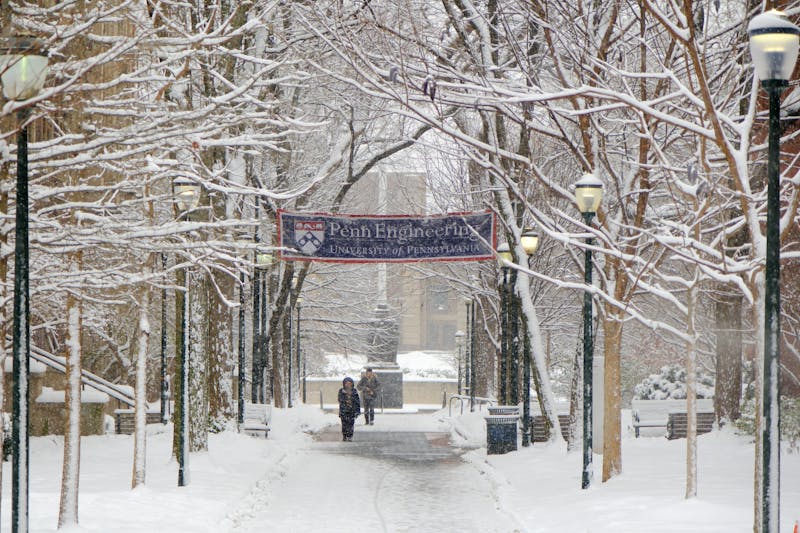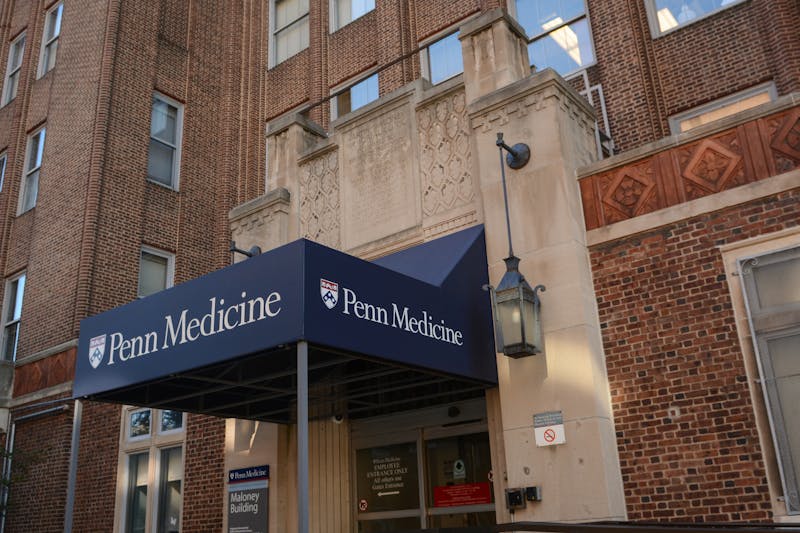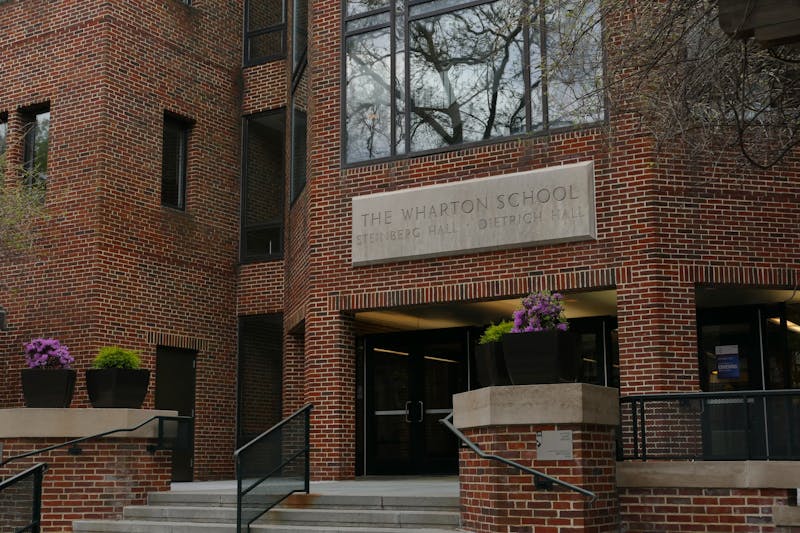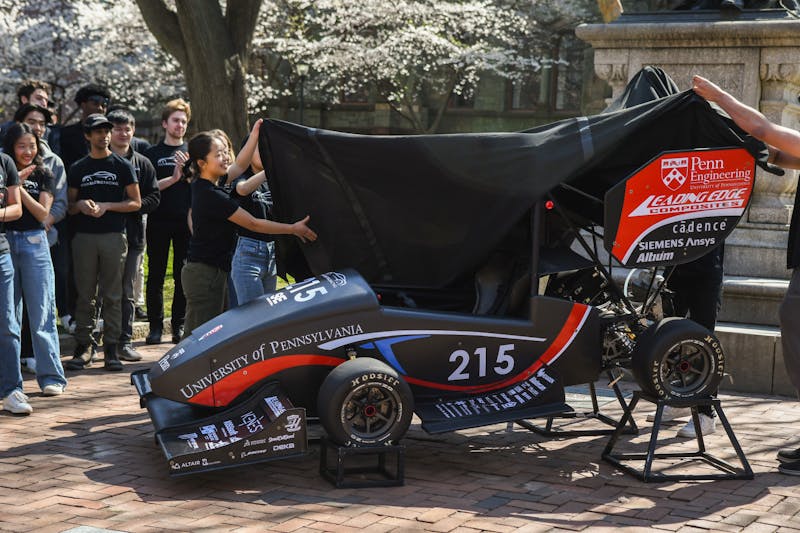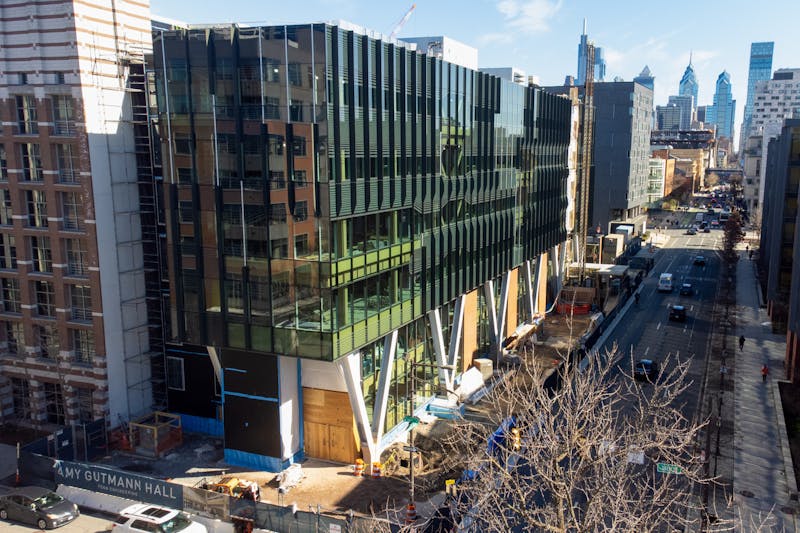
Penn Engineering's Moore Building is located at 200 South 33rd Street.
Credit: Chenyao LiuMembers of two of the School of Engineering and Applied Sciences' largest “build clubs” described inadequate support and unfair treatment from Engineering administrators.
Five Engineering student members described a lack of club space, as well as prohibitions on testing and machining laboratory use. Those obstacles are not shared by other Engineering clubs, the students said.
Dean of the Engineering School Vijay Kumar wrote in a statement to the DP that while there is a laboratory space shortage, renovations of existing Engineering School buildings as well as the construction of the Vagelos Laboratory for Energy, Science, and Technology and Amy Gutmann Hall “will create new opportunities for student spaces that will alleviate some of the challenges with project space.”
“I am sympathetic to the needs of the Penn Aerospace Club and encourage them to reach out to the [Engineering] School leadership, including the dean’s office and department chairs, as we would be happy to discuss their challenges,” Kumar wrote.
Concerns about equipment storage and club space
The Engineering School is home to three large “build clubs”: Penn Aerospace Club, Penn Aerial Robotics, and Penn Electric Racing. The clubs, which are student-run, are recognized by the Engineering School and receive the bulk of their funding from the Student Activities Council.
Penn Aerospace Club and Penn Aerial Robotics leadership described space as the biggest challenge.
Engineering junior and President of Aerial Robotics Xiangyu Chen described having to take apart their 14-foot-wingspan airplane to store it in different club members’ houses.
“I’ve had to carry [heavy aircraft components] all the way back to 40th Street,” he said, adding that Penn Aerial Robotics does not have access to a space to store its aircraft in the rain. Chen described having to wait at the Engineering School until late at night to avoid the plane getting wet.
An Engineering sophomore with knowledge of Penn Aerospace Club’s operations, who was granted anonymity for fear of retaliation against the club, explained that this is a new issue. Historically, Penn Aerospace Club has been able to store their materials along the wall of a robotics classroom.
According to the sophomore, the club was “kicked out” of the room last spring for renovations, with administrators saying that the the club’s access to the space had always been temporary. He added that other clubs — specifically Penn Electric Racing — have not faced the same storage issues.
“Have you ever been into their room? Oh, it’s all their stuff. They have so much stuff. And it’s spread out all over the room,” he said.
The co-leads of Penn Electric Racing’s operational and mechanical teams did not respond to requests for comment.
Penn Aerospace Club is currently storing their materials in unused senior design project lockers.
“During our build phase, it’s been kind of a struggle,” Engineering sophomore Avaniko Asokkumar, who is the Penn Aerial Robotics treasurer and a member of Penn Aerospace Club, said.
Chen described a meeting that took place in spring 2023 between all three build clubs and Peter Bruno, the Engineering School’s Education Laboratory Coordinator in charge of room B11 in the Towne Building where Penn Electric Racing meets. In that meeting, Chen said that B11 was to become a shared club space.
However, changes to make usage of the space more equitable have yet to materialize, according to an Engineering junior familiar with Penn Aerospace Club, who requested anonymity due to fear of retaliation against the club. She also described her frustration at being told to “start cutting back on the amount of materials that you have.”
According to Chen, Penn Aerial Robotics approached Bruno this fall about using room B11, who told them that Penn Electric Racing would continue to occupy the space. Bruno did not responded to the DP’s request for comment.
Certain clubs are not given access to the Precision Machining Laboratory, for unclear reasons
Students involved with Penn Jet Propulsion, a branch of Penn Aerospace Club, expressed frustration with a lack of access to the Engineering School’s Precision Machining Laboratory.
Engineering junior and Penn Jet Propulsion Lead Propulsion Engineer Henry Seiden explained that since mid-February, administrators have restricted club access to the lab.
On March 15, Seiden received an email in response to his request to use the PML. In emails obtained by the DP, Senior Instructional Laboratory Coordinator Jason Pastor wrote that “at this time we are not supporting requests from Penn Jet Propulsion club.”
Three days later, Seiden received an email from Peter Szczesniak, manager of Manufacturing and Fabrication Services at the Engineering School. '
“The PML & its staff [are] not permitting any manufacturing to take place in our facilities,” he wrote in the email.
Szczesniak did not respond to the DP’s request for comment.
A month earlier, an email was sent to Penn Electric Racing and Machine Lab assistants detailing instructions for PML use.
Penn Jet Propulsion faces testing difficulties ahead of air force competition
Additionally, Penn Jet Propulsion has been unable to test their build, which students say is a major issue.
The club is currently participating in the Air Force’s Aerospace Propulsion Outreach Program. The competition requires students to externally modify an off-the-shelf, model-size jet engine to perform certain tasks.
The DP obtained the APOP Statement of Work from both of the last two years, which outline rules and instructions for participating teams. It is explicitly mandated in those documents that participating teams test the engine prior to arrival at the Wright-Patterson Air Force Base, where the competition is held.
Teams who cannot demonstrate a successful test of their design in accordance with a test profile prior to the competition risk “long-term delays, design rejection, and/or cancellation of the contract,” according to this year’s statement of work.
A proposal submitted by the University on behalf of Penn Jet Propulsion to support the club’s participation in APOP requests $18,489 to participate in the competition. The proposal references a four-month-long “testing and improving” period, and describes a “containment and testing unit for live engine tests.”
However, multiple students told the DP that Engineering School administration has been unwilling to approve a testing plan.
In response to a request for comment, Kumar pointed out that Penn is a “dense urban campus.”
“While all of us at Penn enjoy the benefits that come with our beautiful campus, we cannot support projects that require tests with jet fuel to be done on campus,” he wrote.
The Engineering junior explained that the club understood these challenges and spent the summer finding an off-campus firm with facilities to test their engine.
Penn Jet Propulsion made sure that the firm selected for testing would cover the club under its insurance, and put together a “really thorough testing plan of how we’re going to run the engine, how we’re going to start it up, shut it down, the kinds of tests that we want to do,” according to the student.
Seiden said that the Piasecki Aircraft Corporation agreed to run the test at their facility near the Philadelphia airport. An agreement was drawn up allowing Penn Jet Propulsion to test for a nominal fee, which was then submitted to Engineering administrators.
According to the Engineering sophomore, Penn Jet Propulsion asked for permission long in advance, understanding that Risk Management, Penn administrators, and Environmental Health and Radiation Safety Departments were involved in the approval process.
He said that when administrators responded, they were told the proposal was not safe enough.
“How are we going to get any safer?” he asked.
The Environmental Health and Radiation Safety Department did not respond to the DP’s requests for comment.
Administrators’ unwillingness to work with Penn Jet Propulsion might have something to do with the club’s previous leadership, according to Seiden. He said that in the past, “they were more of the mindset of doing things first and asking for forgiveness later.”
All five students who spoke with the DP emphasized the importance of build clubs — both to their Penn experience and professional futures.
Chen said experience in build clubs is important for securing internships, adding that build projects are frequently asked about in interviews.
The Engineering junior said that proper support is essential to keeping members passionate, adding that “people get really excited about PER; and [students] want to do the same thing with PAC and PJP.”
“We want to get to the same level as them, but we’re just not being supported in the same way,” she said. The fear is that if unable to build and test their engines, “The passion for the club might fizzle out,” the Engineering junior said.
The Daily Pennsylvanian is an independent, student-run newspaper. Please consider making a donation to support the coverage that shapes the University. Your generosity ensures a future of strong journalism at Penn.
Donate







